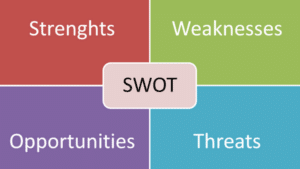With any luck, you were able to take some time off around the holidays to relax and recharge for the New Year. With time to reflect and decompress, you should be entering your next year of business with a fresh set of eyes and new found energy. Make the most out of this feeling by channeling your energy into annual business planning and give your business the direction and momentum it needs to have its best year yet.
Your business plan doesn’t have to be overly complex, but it does need to be organized and give you the framework to map out your next year of business. When we talk to our customers, we find that many business owners find the following five steps to be helpful and easy to navigate for their planning.
Review and Assess
- Analyze the last 3 years of revenue and determine how it compares to your closest competitor.
- Pull reports that give you a clear picture of your revenue year over year and month over month. Try to spot trends that help you identify activities you tried that worked well for your business, or things that didn’t. Next, take a look at your closest competitor. While you won’t be able to know what their books look like, you can get a feel for their revenue growth by looking at their marketing efforts, facility upgrades, etc.
- What were your greatest strengths, weaknesses, opportunities and threats from the last year?
- Going through a traditional SWOT analysis is a great way to get a high-level view of your business over the last year that can help you spot obvious next steps and lessons for your annual business planning.
Define Your Purpose: Who are we here for?
- Who are our most valuable customers?
- By identifying your most valuable customers you will learn two things. Firstly, you’ll learn what ‘kind’ of customer is the best fit for your business, which will help you determine your target market and a focus for marketing to similar people that are not yet customers. Secondly, you’ll be able to learn more about your best customers and determine the best way to retain them and brand new customers.
- What value are we adding to their lives?
- Look at this group of “best customers” and determine what they’re buying and when they’re buying. This information will help you create a strategy for how to serve them better with more products or services that meet their needs. This is also a good time to think of different ways to reinforce your relationship with your customers by providing value through helpful information, coupons, or just a nice email message.
- Why are we a better fit than our competitor?
- Think about your most valuable customers, why do you think they are choosing you over your competitor? If you’re not sure, it might be helpful to provide an easy way for your customers to provide feedback into what they like and don’t like about your business, so that you can continue to build on your strengths and learn from your weaknesses.
Outline High-Level Goals
- What are the priorities of everyone (yes everyone) at your company?
- To succeed, everyone within your organization needs to understand the underlying mission of your business—for the next year and for the long-term. Starting from the top (you) and down, take an honest look at the priorities each person carries: Do those priorities align with the business’ goals? Is that person working on the most impactful priorities, given their unique set of skills and expertise?
- How do you want to position your service in the market this year?
- What does your business want to be when it grows up? With that clear picture in your mind start to think about the messaging and the offerings of the company you aim to be and weave that into your current activities to start building momentum behind the direction you want to move.
Make a Plan
- Keep it short! A concise plan is digestible and more easily accomplished.
- Keep it short and keep it simple. Start with your goals for the upcoming year, figure out what activities need to happen to get to those goals, assign and delegate as a team, making sure everyone understands their priorities and accountability and give your team the autonomy and tools to succeed.
- Does everyone feel like they have stake in what is being worked toward?
- When your employees understand and believe in the business’ mission, they will feel a sense of purpose. When they understand how that mission can be achieved, they will feel a sense of direction and focus. Talk to your employees, have candid conversations and take that feedback into consideration in your annual business planning and as you think about the long-term vision of your organization.
Measure Success
- Create specific, time bound deadlines for each level of the plan
- Your annual plan is the road map for you and your employees for the next year. That road map needs milestones (deadlines, success metrics) that carry your plan forward through a series of smaller goals that lead into your larger goal of where you want your business to end up by the end of the year.
- Be flexible! Critically look at how you are progressing toward the objectives and change them as needed.
- While your plan should provide structure, it should also be pliable. Revisit your plan often and make changes when needed. You are the boss of your plan so own it and let it be the tool that helps you feel ‘in control’ and helps drive the success of your business.
Going through the process of creating an annual plan is something that every business owner can benefit from, regardless of the size of the business. If you are a business of one, share your plan with a mentor or someone you respect in your network for feedback. If you are business of many employees, get feedback from your team to create an informed plan that everyone can buy into and get behind.



